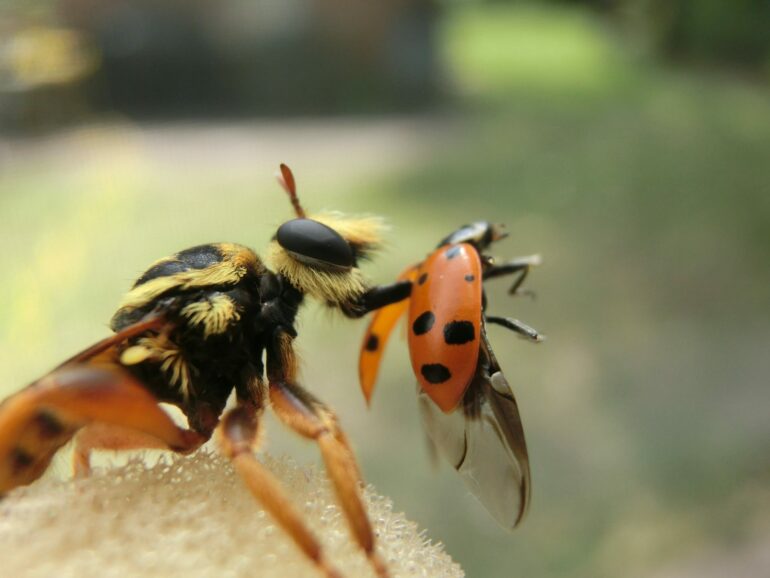April in the Florida Panhandle. It was hot, humid, and a thunderstorm was lurking. But as a fresh graduate student, I was relieved for the escape from my first brutal Minnesota winter. I was accompanying my adviser, Paloma Gonzalez-Bellido, on a project that would end up dominating my Ph.D. work. Out in the scrubland, my eyes darted at every movement, on the alert for an insect that likes shiny beads.
Laphria saffrana, also known as robber flies, are chunky black and yellow flies. Most of a laphria’s head is made up of its large eyes, between which sits a formidable proboscis – a long, tubular mouthpart that can deliver a potent venom capable of incapacitating prey in a heartbeat.
The photos Paloma showed me before we got there, though stunning, were of no help in looking for the fly. There were insects flying in every direction, their movements a blur, making it impossible to pick out any details. I only had a split second to figure out whether the thing I was seeing was a laphria, a similarly colored yellowjacket wasp, or something else entirely.
Despite their relatively crude vision, the flies I was looking for are far more adept than I am at picking out the insects they’re targeting. Somehow they’re able to zero in on their prey of choice: beetles. Based on her field observations the previous year, Paloma thought they did this by looking for the flash of beetle wings.
If she was right, laphria have hit upon an ingenious trick that balances the need for speed, accuracy and specificity. Here are some of the clues we’ve found to the secrets of their success.
Following the flash
Paloma had previously studied other predator insects such as dragonflies and killer flies. Their compound eyes don’t provide a lot of detail about the visual world, making it possible to trick them into chasing simple beads as if they were their prey insects.
But when Paloma tried the same sleight of hand on laphria, they wouldn’t go for the regular black beads. They chased only clear beads.
The one important difference between laphria and the other predators Paloma had studied is that they’re picky eaters. Their prey of choice are beetles. So, Paloma and our collaborator, Jennifer Talley, speculated that the reason laphria are attracted to shiny beads is because they reflected light and flashed like the clear wings of a beetle.
In Florida, we tested this idea by swapping out the plain black beads for a panel of LED lights that we could program to flash in sequence at a frequency that matched the wing beats of beetles, which can be anywhere from 80 to 120 beats per second.
The experimental setup, with a robber fly sitting on a log facing the LED light panel.
In an outdoor enclosure, Paloma placed previously caught robber flies one after the other on a log. Outside, Jennifer and I controlled the LED panel in front of the log and the high-speed cameras that…



